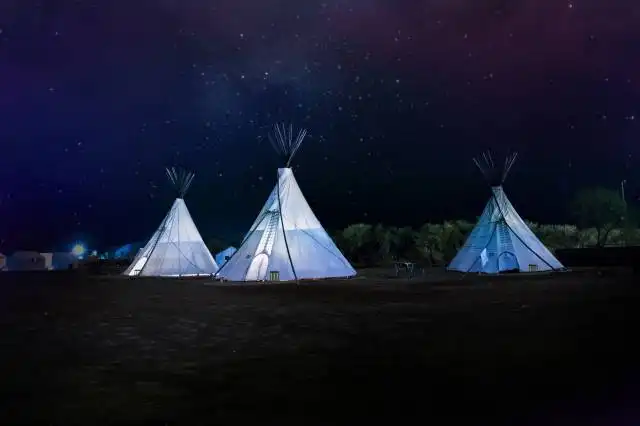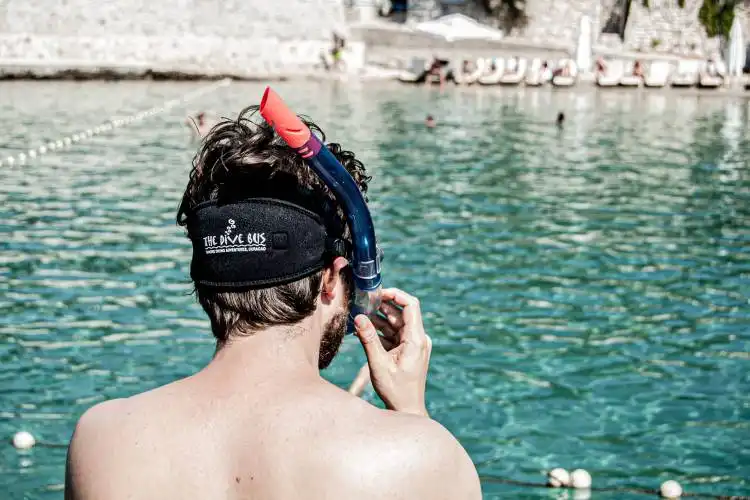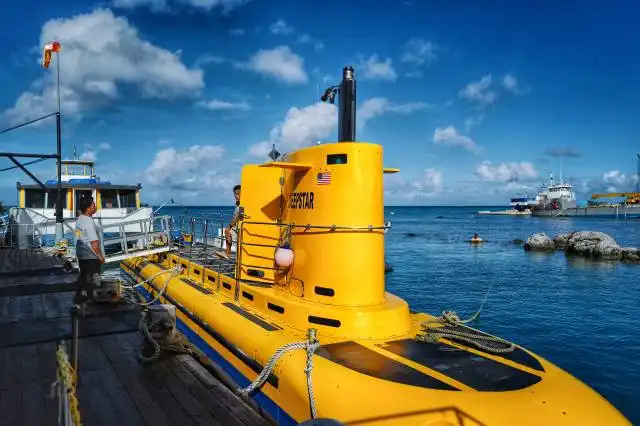Start a Whitewater Rafting Business
Paddling Towards Adventurous Entrepreneurship: The Whitewater Rafting Business
| Updated


WHITEWATER RAFTING BUSINESS
Looking to create a thrill-packed business but don't want to find yourself up the creek without a paddle? Consider diving into the whitewater rafting business! This venture offers adrenaline-fueled aqua adventures to customers seeking an accessible escape from the mundane. As a whitewater rafting business owner, you'll provide safety gear, rafts, guides, and thrilling courses through nature's own water roller coasters. Combining nature, excitement, and exercise. Now, who said business can't be fun and games?
Jump to Business Plan
RELATED BUSINESS IDEAS
Browse ALL Hospitality & Leisure Ventures Business Ideas
Discover Your Perfect Domain
Unlock the door to your online success with our hand-picked selection of premium domain names. Whether you're starting a new venture or rebranding an existing one, the right domain can set the tone for your digital presence. Browse through our curated list, each with its unique potential to enhance your brand's visibility and credibility.
WHITEWATER RAFTING MINI BUSINESS PLAN
This a quick reality check to help you identify the strengths and weaknesses of your business concept before you dive in.
Expected Percent Margin:
- Gross Margin: 40-50%
- Net Profit Margin: 10-15%
Earnings Expectations:
- Daily Earnings: $400 - $800
- Weekly Earnings: $2,000 - $5,600 (Peak season)
- Monthly Earnings: $8,000 - $22,400 (Peak season)
- Annual Earnings: $48,000 - $134,400 (Note: Income varies widely based on seasonal considerations)
Actions to Achieve These Numbers:
Service Provision:
- Expert Guides: Hire experienced and certified whitewater rafting guides.
- Diverse Offerings: Offer various trips of different lengths and difficulties to cater to a wide range of customers.
Marketing and Customer Acquisition:
- Promotions: Run promotional offers during off-peak times to attract customers.
- Partnerships: Partner with local hotels and holiday rentals for referrals.
- Website and SEO: Create an engaging, easy-to-navigate website, optimize for SEO to increase online visibility.
Equipment:
- Quality Rafts & Equipment: Invest in safe and durable rafts and safety equipment.
- Routine Maintenance: Implement a routine maintenance schedule to prevent costly repairs.
Insurance and Liabilities:
- Adequate Insurance: Secure a comprehensive insurance policy to protect against liabilities.
- Safety Protocols: Invest in rigorous safety training and emergency response procedures.
Seasonality:
- Seasonal Operations: Run trips primarily during peak seasons, scaled back operations or closures in off-peak periods.
- Flexible Staffing: Employ seasonal staff to handle increased demand during peak periods.
Business Operations:
- Group Bookings: Aim to fill each trip to capacity. Offering group booking discounts can encourage this.
These figures and approaches are rough estimates, actual profit can fluctuate based on geographical location, climate, demand, and competitor activity. It's imperative to conduct an in-depth feasibility study before starting.
NOT WHAT YOU HAD IN MIND? Here are more ideas



Browse ALL Hospitality & Leisure Ventures Business Ideas
Grab Your Business Website Name
Before you get caught up in the whirlwind of setting up your business, invest in a domain name. It's a small but significant step that lays the foundation for your brand and makes it easier for customers to find and trust you. Just like you wouldn't build a house without securing the land first, don't build a business without securing your domain name.
"Why? Can't that wait?" Here's why it shouldn't
Step 1: Determine if a Whitewater Rafting Business is Right for You
Starting a whitewater rafting business can be a great way to make money and enjoy the outdoors, but it is important to make sure it is the right endeavor for you. Before taking the plunge, you should take the time to understand the startup and ongoing expenses associated with the business.
Breakdown of startup expenses
Starting a whitewater rafting business requires a significant investment. You will need to purchase or rent rafts, safety equipment, and other necessary items. You will also need to hire guides and staff, as well as secure any necessary permits and licenses. Additionally, you may need to invest in marketing materials and advertising to get the word out about your business.
Breakdown of ongoing expenses
Once you have started your business, there will be ongoing expenses you need to consider. These include the cost of maintaining and repairing equipment, as well as the cost of insurance and liability coverage. You will also need to consider the cost of any necessary staff training and the cost of marketing and advertising.
Examples of ways to make money
There are many ways to make money with a whitewater rafting business. You can charge customers for guided tours, rent out equipment, and offer classes and workshops. You can also offer special packages and discounts to attract more customers. Additionally, you can partner with other businesses to offer discounts and promotions to their customers.
Step 2: Name the Business
When naming a business, it is important to think of a name that is creative, memorable, and reflects the brand. It is also important to make sure the name is not already in use by another business. Consider using a combination of words that are related to the business, such as whitewater rafting, or a pun on the business name. Additionally, research the domain name to make sure it is available and not already taken. It is also important to consider the potential for trademark infringement if the name is too similar to another business. Finally, it is important to make sure the name is easy to spell and pronounce, as this will make it easier for customers to find the business.
Step 3: Obtain Necessary Licenses and Permits
Before starting a whitewater rafting business, it is important to research local, state, and federal regulations to ensure that the business is compliant with all applicable laws. Depending on the location of the business, the necessary licenses and permits may vary. For example, some states may require a business license, while others may require a permit to operate on public waterways. It is important to research the specific regulations that apply to the business and obtain the necessary licenses and permits before beginning operations.
In addition to researching local, state, and federal regulations, it is important to research the specific regulations that apply to whitewater rafting businesses. This may include regulations related to safety, insurance, and environmental protection. Depending on the location of the business, there may be additional regulations that must be followed. It is important to understand all applicable regulations and obtain the necessary licenses and permits before beginning operations.
Furthermore, it is important to research any additional permits or licenses that may be required to operate a whitewater rafting business. For example, some states may require a special permit to operate on public waterways. Additionally, some states may require a special permit to operate a business on a particular river or lake. It is important to research the specific regulations that apply to the business and obtain the necessary permits and licenses before beginning operations.
Finally, it is important to research any additional regulations that may apply to the business. This may include regulations related to safety, insurance, and environmental protection. Additionally, it is important to research any additional permits or licenses that may be required to operate a whitewater rafting business. It is important to understand all applicable regulations and obtain the necessary licenses and permits before beginning operations.
Step 4: Secure Financing
Exploring financing options is an important step in starting a whitewater rafting business. There are a variety of financing options available, such as bank loans, lines of credit, venture capital, and angel investors. It is important to research all of the options available to determine which one is best for the business. Additionally, it is important to research potential investors to ensure that the business is getting the best deal possible. Investors can provide capital, but they may also require an ownership stake in the business. It is important to understand the terms of the investment before committing to any investor.
When researching potential investors, it is important to consider their experience in the industry and the type of investments they typically make. Additionally, it is important to understand the terms of the investment, such as the rate of return and the length of the investment. It is also important to understand any restrictions that may be placed on the business, such as restrictions on how the business is run or how profits are distributed. Finally, it is important to understand the investor's expectations for the business and how they plan to help the business succeed.
Step 5: Purchase Equipment
When it comes to starting a whitewater rafting business, the right equipment is essential. Research the best and most reliable equipment for the job. This should include rafts, paddles, helmets, life jackets, and any other necessary items. Consider the size and weight of the equipment, as well as the cost. It is important to purchase quality equipment that will last, as this is a business investment. Additionally, consider any additional items that may be needed, such as a first aid kit, a waterproof bag, or a waterproof phone pouch. It is also important to purchase any necessary insurance for the equipment.
Consider renting equipment
In addition to purchasing equipment, consider renting equipment as an option. This can be a great way to save money, especially for those just starting out. Research rental companies in the area and compare prices. Make sure to read the rental agreement carefully and understand all the terms and conditions. Additionally, consider any additional costs such as delivery fees and insurance.
Consider hiring a guide
When starting a whitewater rafting business, it is important to consider hiring a guide. A guide can provide valuable insight and knowledge about the area, as well as help ensure the safety of the participants. Research local guides and compare prices. Make sure to check the guide's qualifications and experience. Additionally, consider any additional costs such as insurance and licensing fees.
Step 6: Hire Employees
Determine the number of employees needed
Before hiring any employees, it is important to determine the number of employees needed to run the business. This number will depend on the size of the business, the number of trips offered, and the number of customers that can be accommodated. It is important to consider the cost of hiring employees and the cost of training them. It is also important to consider the amount of time it will take to train them and the amount of time it will take for them to become proficient in their job.
Create job descriptions
Once the number of employees needed is determined, it is important to create job descriptions for each position. Job descriptions should include the duties and responsibilities of each position, the qualifications and skills required, and the salary and benefits offered. It is important to be clear and concise when creating job descriptions so that potential employees understand the expectations of the job.
Recruit and hire employees
Once the job descriptions are created, it is time to start recruiting and hiring employees. There are several ways to recruit and hire employees. One way is to post job openings on job boards and websites. Another way is to attend job fairs and networking events. It is important to be selective when hiring employees and to make sure that the employees have the necessary skills and qualifications to do the job. Once the employees are hired, it is important to provide them with the necessary training and resources to do their job.
Step 7: Market the Business
Creating a website is an essential step in marketing a whitewater rafting business. A website should include information about the business, such as the services offered, pricing, and contact information. Additionally, the website should include a blog with helpful tips and advice for whitewater rafting. This will help to establish the business as an authority in the industry and help to attract customers.
Social media is another great way to market a whitewater rafting business. Platforms such as Facebook, Twitter, and Instagram can be used to post updates about the business, such as new services or special offers. Additionally, social media can be used to engage with customers, answer questions, and build relationships.
Developing a marketing plan is also important for a whitewater rafting business. A marketing plan should include a budget, target market, and strategies for reaching the target market. Additionally, the marketing plan should include tactics for measuring the success of the marketing efforts. This will help to ensure that the business is getting the most out of its marketing budget.
Step 8: Establish Policies and Procedures
Creating safety policies is an important step in starting a whitewater rafting business. It is important to create policies that ensure the safety of customers, staff, and equipment. These policies should include the proper use of safety equipment, the use of life jackets, and the use of helmets. It is also important to create policies that ensure that the business is compliant with local, state, and federal regulations.
Establishing customer service policies is also important. These policies should include how customers are greeted, how customer complaints are handled, and how customer feedback is collected. It is important to create a customer service policy that is consistent and that customers can rely on. It is also important to create policies that ensure that customers are treated fairly and that their concerns are addressed in a timely manner.
In addition to creating safety and customer service policies, it is important to establish policies for staff. These policies should include how staff are trained, how staff are expected to interact with customers, and how staff are expected to handle equipment. It is important to create policies that ensure staff are properly trained and that they understand the importance of safety and customer service.
Finally, it is important to establish policies for the use of equipment. These policies should include how equipment is maintained, how it is used, and how it is stored. It is important to create policies that ensure that the equipment is in good condition and that it is used in a safe and responsible manner. Establishing policies and procedures is an important step in starting a whitewater rafting business.
Step 9: Launch the Business
Promote the Business
Before launching the business, it is important to create a promotional plan. This plan should include a budget, target audience, and a timeline. Additionally, it is important to create a website, social media accounts, and other digital marketing strategies. It is also important to create a press release and reach out to local media outlets. Finally, consider creating a referral program to incentivize customers to spread the word about the business.
Launch the Business
After the promotional plan is complete, it is time to launch the business. This includes opening the business for customers, hiring staff, and setting up the business operations. Additionally, it is important to have a grand opening event to attract customers and create buzz. Consider offering discounts or freebies to incentivize customers to come to the grand opening. Finally, it is important to have a plan for customer service and a plan to handle customer feedback.
EXPLORE MORE CATEGORIES
Browse ALL Business Idea Categories
TAKE THE NEXT STEPS










